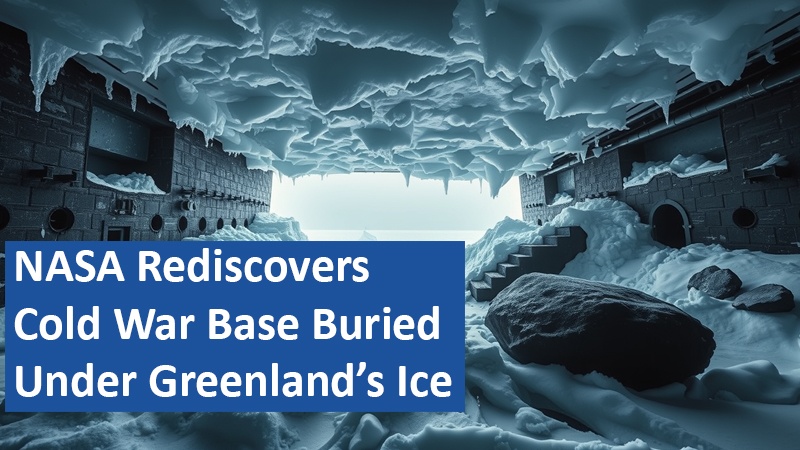NASA scientists have located Camp Century, a U.S. military base from the Cold War era, buried deep beneath Greenland’s ice sheet. Built in the 1950s and abandoned in 1967, the base remained hidden under layers of ice for decades. This discovery not only uncovers a historical artifact but also highlights the challenges of climate change impacting Greenland’s melting ice sheet.
By Aubree Ross
A Hidden Cold War Project

Camp Century was part of the secretive “Project Iceworm,” an ambitious U.S. Army plan to create missile bases beneath Greenland’s ice. The facility consisted of a network of tunnels that housed living quarters, laboratories, and a nuclear reactor. Designed to support Cold War military efforts, the base was ultimately abandoned due to logistical difficulties and the unstable nature of the ice. Since then, its remnants have remained buried under thick ice layers, largely forgotten until now.
Advanced Technology Reveals the Past
NASA scientists used UAVSAR radar technology to detect the buried structures of Camp Century. This state-of-the-art system, designed to study ice sheet dynamics, penetrates deep ice layers to produce detailed images of the subsurface. The radar revealed intact tunnels and structures, offering unprecedented insights into the base’s layout and condition. The rediscovery demonstrates the power of modern technology in unveiling lost chapters of history.
Climate Change and Emerging Risks
As Greenland’s ice sheet continues to melt due to global warming, Camp Century’s hidden remnants face exposure. This poses potential environmental hazards, including the release of nuclear waste and other contaminants from the base. Simultaneously, the radar data provides critical information about ice sheet dynamics, aiding in predictions of future sea-level rise. These findings emphasize the dual importance of preserving historical artifacts while addressing environmental challenges.
A Discovery with Broad Implications
The rediscovery of Camp Century bridges the gap between historical inquiry and climate science. It highlights the intertwined effects of human activity and environmental change, illustrating the ongoing impact of past decisions. As the Greenland ice sheet continues to transform, studies like this remain vital in understanding both the planet’s history and its future.
The unearthing of Camp Century raises critical questions about preserving history and managing the effects of climate change.
Based on information from www.dailygalaxy.com and own research.